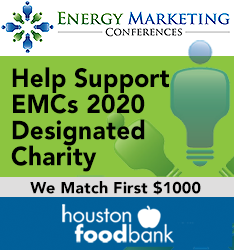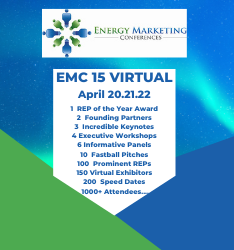|
|
|
|
|
Retail Choice Regulator Issues Strategic Vision Document For "Regulatory Sandbox"; Meant To Cultivate Innovative Products & Services, Including Utility-Led Programs & Third Party Services
The following story is brought free of charge to readers by EC Infosystems, the exclusive EDI provider of EnergyChoiceMatters.com
As part of developing an Innovation Framework for the electric industry, the Connecticut PURA has issued a Regulatory Sandbox Strategic Vision Document which includes a proposed roadmap of concepts, best practices, and design principles for consideration in establishing an Innovation Framework in Connecticut.
"The Authority envisions creating a regulatory sandbox, or Innovation Framework, that provides an opportunity to test innovative products and services, while establishing common-sense guardrails to ensure consumer protection and ratepayer benefits. Key principles of the regulatory sandbox will be to encourage competition, minimize ratepayer exposure, and to further Connecticut’s public policy goals," PURA said
The Strategic Vision Document, on which PURA invited comments, is a first step towards such goal. The Authority will subsequently issue a straw proposal of the Innovation Framework, which will be subject to refinement.
PURA's Strategic Vision Document notes that, "innovation, by its very nature is often in tension with incumbent regulation. Innovation requires testing unproven concepts and technologies and pursuing ideas that may very well fail. These tenets of innovation are often at odds with both the obligations of electric distribution companies (EDCs), which are encouraged to avoid risks for safety, security and reliability, and the duty of regulators to ensure a well-run and efficient electricity system. The resulting question is: what steps can be taken to encourage needed innovation within a regulated industry?"
"The concept of a regulatory sandbox was developed to address this uncertainty. These sandboxes create limited waivers from normal regulations and requirements, allowing companies with new, innovative ventures to test their products or services in a constrained and safe environment – often on an expedited basis. This flexibility is especially critical for the introduction of new customer offerings. In a rapidly changing and increasingly dynamic electricity marketplace, utilities, third-party innovators, and regulators alike can benefit from agile processes and approaches that can quickly prototype new solutions – nimbly meeting the needs of the grid and customers as they arise," PURA's Strategic Vision Document states
"Through a regulatory sandbox, called an Innovation Framework in this context, the Public Utilities Regulatory Authority (PURA) will be able to create space for companies, both the EDCs and third parties, to prototype and test innovative products and services, while establishing common-sense guardrails to ensure consumer protection," PURA's Strategic Vision Document states
"PURA’s Innovation Framework will progress over time to establish tools and a mechanism for innovative paths to market and new ways to engage customers, with the goal of enabling developer and utility partnerships to deliver high-value customer solutions," PURA's Strategic Vision Document states
"A well-designed, flexible Innovation Framework should enable iterative, practical learning through streamlined prototyping of innovative products and services by the EDCs and third-party developers alike," PURA's Strategic Vision Document states
"PURA plans, through this framework, to enable two primary pathways to innovative deployment: (i) steady-state development of innovative products and services – utility-led but enabled through third-party collaboration; and (ii) more infrequent deployments through innovation sprints – competitive, open solicitations for third-party solutions to a specific grid need or system domain area," PURA's Strategic Vision Document states
Of note, PURA cited the United Kingdom's regulatory sandbox Innovation Link which requires a retail supplier license to participate, and which, "encourages innovative solutions from electric services providers and partnership with third party providers."
PURA also cited a utility-led program in Vermont, as well as Illinois’ Smart Grid Test Bed and the New York REV program
PURA's Strategic Vision Document states that the following illustrative principles can help inform threshold criteria for projects implemented under PURA’s Innovation Framework:
• Innovation projects should include a partnership between the utility and a third-party service provider.
• Innovation projects should delineate how the generated economic value is divided between the customer, utility, third-party service provider(s), and ratepayers.
• Innovative projects should avoid undue extension of natural monopoly power into areas that might otherwise prove competitive (e.g., behind-the-meter (BTM) solutions).
• Utilities and service providers should propose rules (data, terms, standards, etc.) that will help create a subsequently competitive environment.
• Innovation projects should inform pricing and rate design modifications.
• Utilities should explore opportunities in their projects to work with and include various residential, commercial, institutional, and industrial customer participants.
It is the intent of the Innovation Framework process to enable deployment of project solutions that might otherwise not be possible; and in some cases, may include relaxation or waivers of specific rules or regulations that fall under the jurisdiction of PURA, PURA's Strategic Vision Document states
"[T]he potential scope of these rule waivers must, by necessity, be limited by PURA’s jurisdictional bounds. PURA does not possess the authority to allow waivers of legal requirements established by the legislature or other local, state, or federal government agencies," PURA's Strategic Vision Document states
"In addition, rule waivers will not include any modifications that might create unduly discriminatory new rules or rules that prevent competitive marketplace," PURA's Strategic Vision Document states
In terms of types of projects for the regulatory sandbox, PURA proposes to establish three categories of project types that will provide participation opportunities for all potential stakeholders.
The first category would focus on innovative mechanisms for deployment of hardware and/or software solutions. For example, a potential project might be an innovative mechanism to support the deployment of EV chargers. It is anticipated that this category will provide opportunity for third-party solution providers to develop and propose solutions, PURA's Strategic Vision Document states
The second category would focus on innovative tariff structures and is expected to primarily include solutions offered by distribution utilities, although project proposals would not necessarily be limited to the EDCs. An example of a potential project that might be considered in this category would be a critical peak pricing program for commercial & industrial customers, PURA's Strategic Vision Document states
The third and final category would be focused on deployment of hardware and/or software paired with novel tariff structures. This might include, for example, deployment of EV chargers paired with a mandatory critical peak pricing rate. It is anticipated that this category would encourage and create opportunities for utility and developer partnerships, PURA's Strategic Vision Document states
PURA intends to establish a four-phase project development cycle. The cycle will begin Phase 1 with a kick-off that opens the application process for potential projects. Once the application window has closed, the process will transition to project screening and selection of a final set of candidate projects. Upon final project selection, PURA plans to provide project proposers with approximately 12 to 18 months to launch and collect data on project success. During the active lifetime of the project, project developers will be required to provide periodic reports and performance reviews to PURA, with confidentiality-redacted reports made publicly available. The final phase will be focused on assessment and lessons learned from the project. This phase will also address potential scaling or retirement of pilot projects as appropriate, based on project performance.
Link to PURA's Strategic Vision Document:
Explanatory Letter
Strategic Vision Document
Docket Number: 17-12-03RE05
ADVERTISEMENT Copyright 2010-20 Energy Choice Matters. If you wish to share this story, please
email or post the website link; unauthorized copying, retransmission, or republication
prohibited.
Compares To U.K.'s Supplier-Focused Innovation Link, As Well As Utility-Focused Program In U.S.
December 23, 2020
Email This Story
Copyright 2010-20 EnergyChoiceMatters.com
Reporting by Paul Ring • ring@energychoicematters.com
NEW Jobs on RetailEnergyJobs.com:
• NEW! -- Retail Energy Account Executive -- Texas
• NEW! -- Supply and Pricing Analyst -- Retail Supplier -- DFW
• NEW! -- Lead Data Analyst
-- Retail Supplier
• NEW! -- Senior Energy Pricing Analyst
• NEW! -- Senior Energy Advisor
• NEW! -- IT Billing Project Manager
• NEW! -- IT Billing Business Analyst
• NEW! -- Financial Analyst -- Retail Supplier -- DFW
• NEW! -- Sr. Energy Intelligence Analyst
• NEW! -- Channel Partner Sales Manager -- Retail Supplier
• NEW! -- Sr. Billing Analyst -- Retail Supplier
• Director of Regulatory Affairs -- Retail Supplier -- Houston
|
|
|
|










